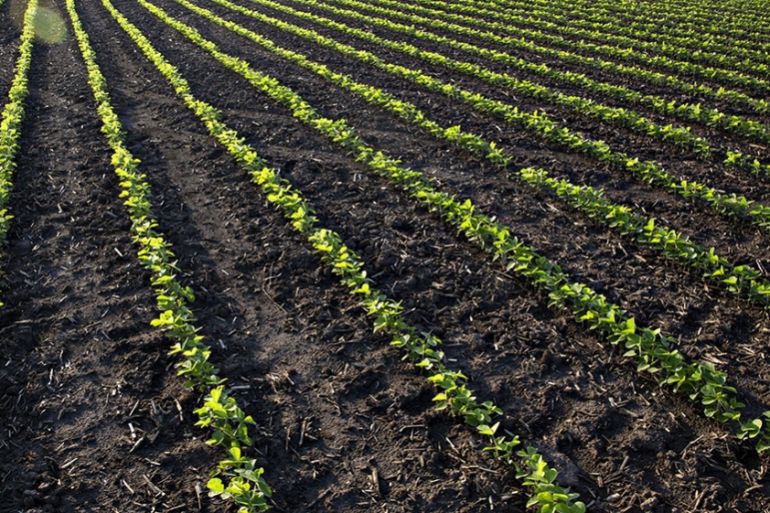Soil erosion: Lost livelihoods, lost incomes and lost food
The twin threats of soil degradation and climate change could disrupt the global food supply and cost trillions.

With more than 90 percent of the world’s food grown from soil, it’s a problem that impacts the health, incomes and livelihoods of billions of people on the planet.
Soil erosion – when the uppermost layer of soil is shifted or worn away – is a growing threat and one that has the potential to impact the entire world.
Keep reading
list of 4 itemsWhy are British farmers pleading for a universal basic income?
Why are some US food producers using antibiotics in meat again?
Photos: Chocolate prices rise as West Africa’s cocoa crisis deepens
In Malawi, for example, soil erosion shaved between 0.6 and 2.1 percent off the country’s gross domestic product (GDP), according to data from the Food and Agriculture Organization of the United Nations (FAO).
Such a reduction in GDP is particularly painful for the low-income country. World Bank data shows per capita income in the African nation was roughly $389.40 in 2018 in comparision to the United States, where per capita income topped more than $62,641 in 2018, according to the World Bank.
While it occurs naturally, soil erosion has been on the rise as a result of what the FAO calls “unsustainable” agricultural practices and “improper” land-use changes such as deforestation.
Soil erosion can lead to as much as a 3.5 percent increase in food prices as a result of a decline in agricultural production. This in turn can lead to tighter food supplies and higher prices.
“Degraded soil is no longer a source of income for farmers,” Ronald Vargas, a soil scientist and the secretary of the FAO’s Global Soil Partnership, told Al Jazeera. “Because of this, they then need to find alternatives such as migrating to cities.”
Soil degradation, Vargas explains, is “a cause for rural poverty and triggers migration”. At the same time, he adds, “food security, adaptation and mitigation, and even sustainable development is severely affected” by the problem.
Soil erosion also poses a threat to the environment.
According to the FAO, the world’s cultivated soils – meaning soils that have been rearranged – have lost between 25 and 75 percent of their original carbon stock, which has been released into the atmosphere in the form of carbon dioxide.
The agency says this is mainly due to unsustainable land management practices such as overpumping groundwater into soil and improper plowing – and that such land degradation lowers a soil’s ability to maintain and store carbon, in turn contributing to climate change.
On World Soil Day, the FAO is imploring stakeholders – especially the largest greenhouse gas emitters – to not only practise sustainable soil management (such as mulching and covering crops to protect the soil’s surface), but to also practice more sound environmental policies.